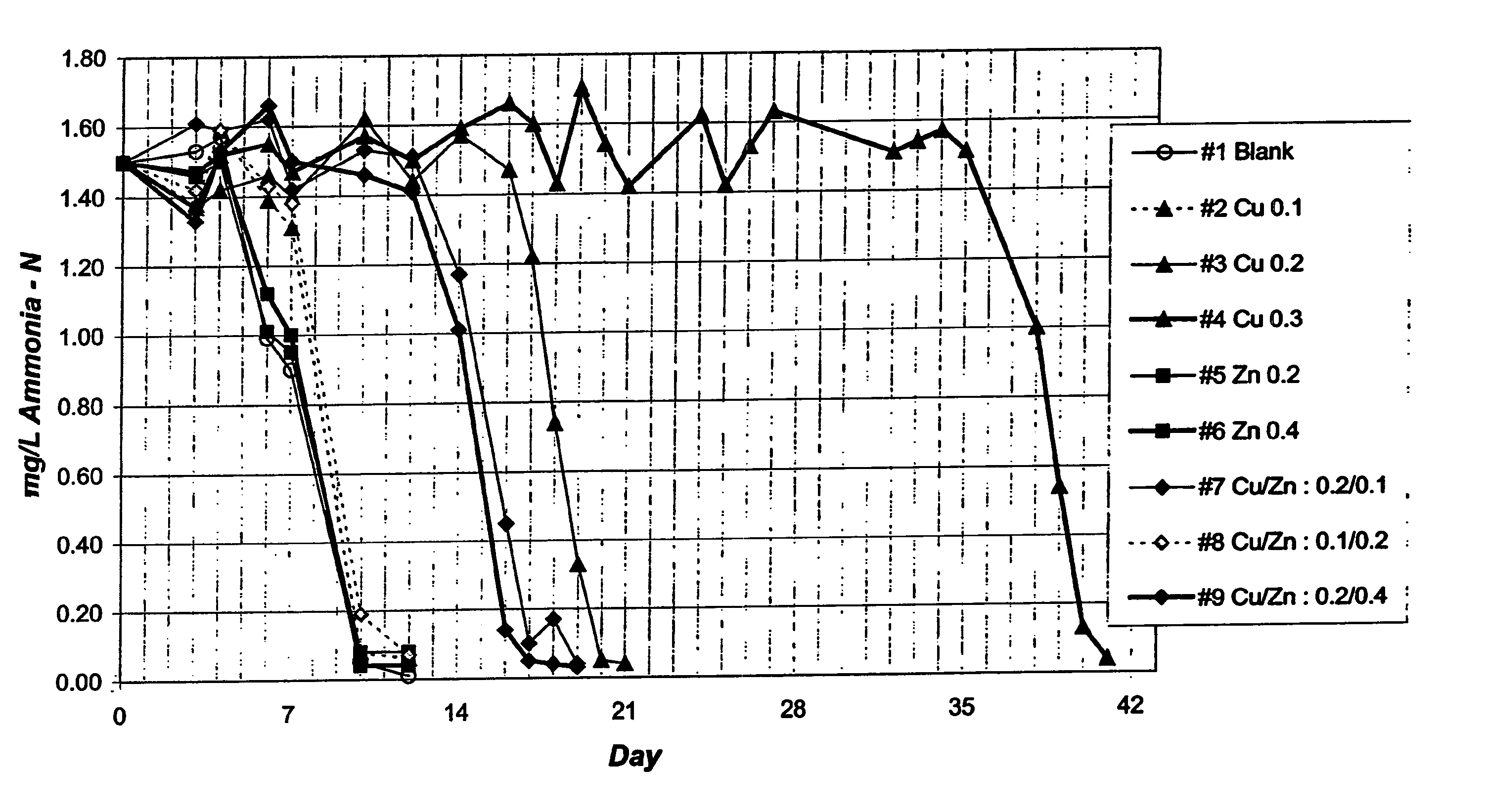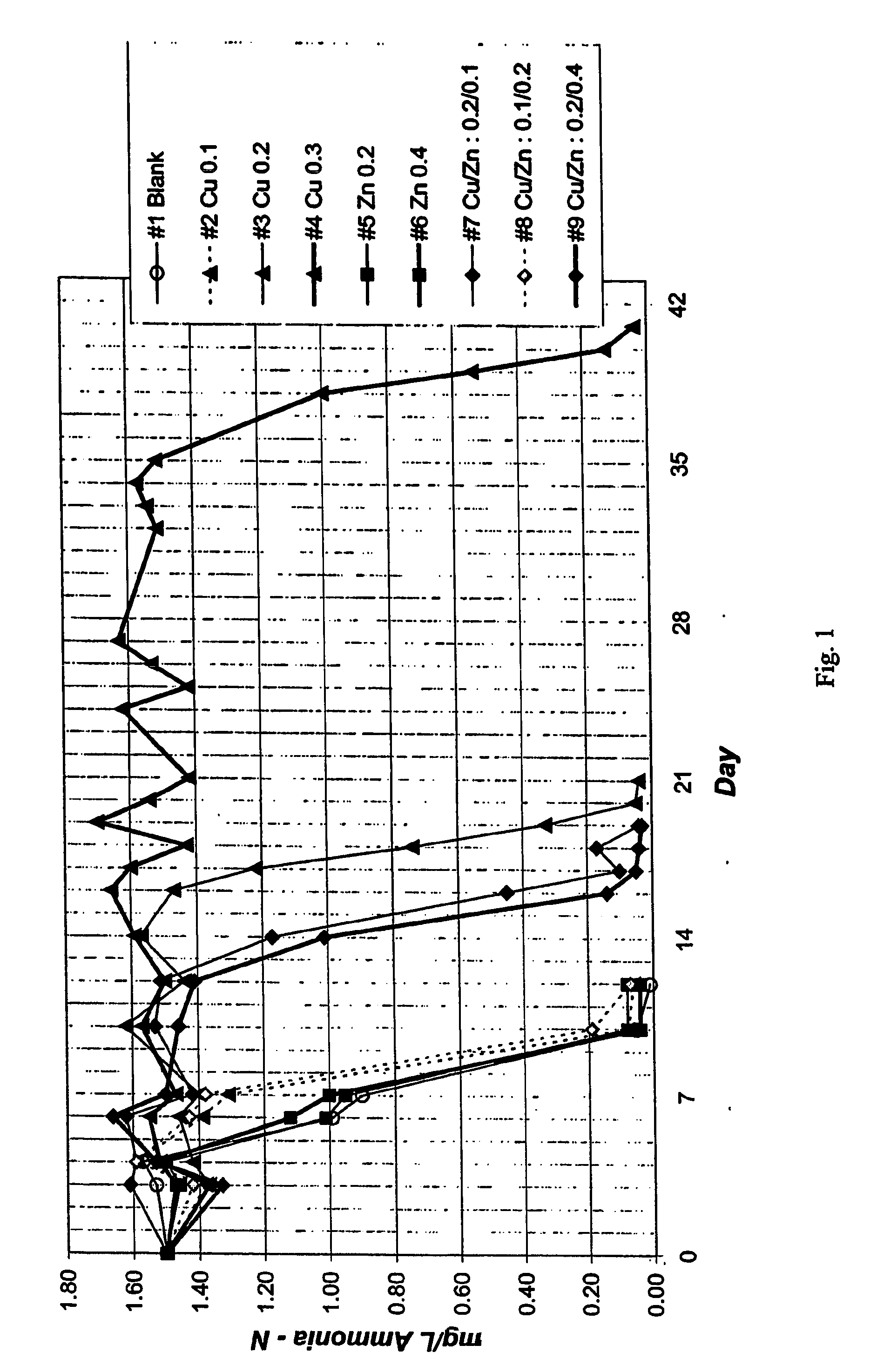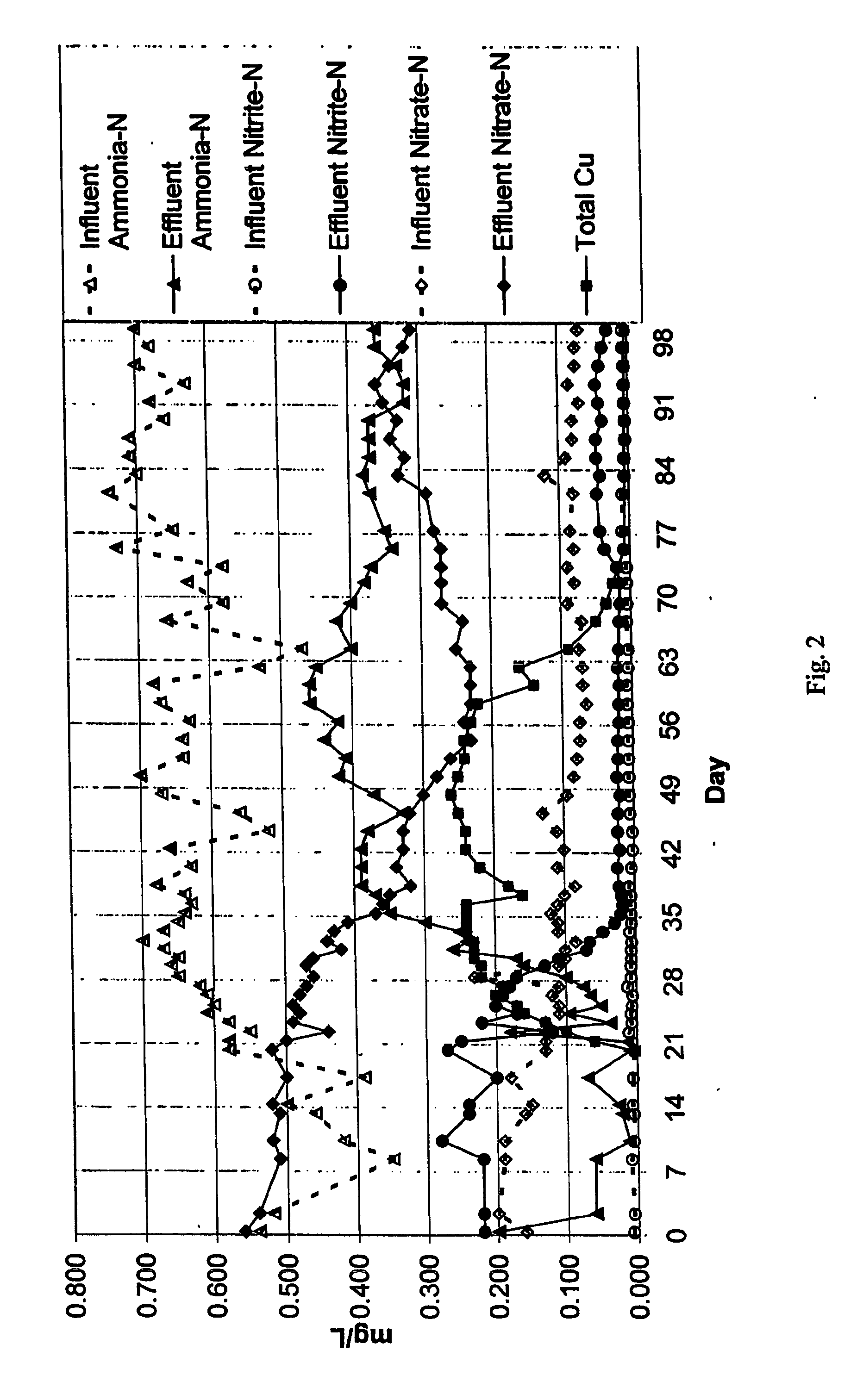Treatment of chloraminated water
a chloramine and water treatment technology, applied in water/sewage treatment by oxidation, biocide, application, etc., can solve the problems of chloramines having a propensity to decay, destroying biofilms, and noticeable change in taste and smell of water, so as to restrict microbial growth in water
- Summary
- Abstract
- Description
- Claims
- Application Information
AI Technical Summary
Benefits of technology
Problems solved by technology
Method used
Image
Examples
example 1
[0026] After the elimination of chlorine, a chloraminated water bulk sample was dosed with excess ammonia to achieve 1.50 mg / L ammonia-N concentration. The bulk sample was dosed with ammonia oxidising bacteria, cultured from a chloraminated system.
[0027] The bulk sample was then subsampled into 9 separate portions. These portions were dosed as follows:
[0028] 1. no dosage
[0029] 2. 0.1 mg / L copper
[0030] 3. 0.2 mg / L copper
[0031] 4. 0.3 mg / L copper
[0032] 5. 0.2 mg / L zinc
[0033] 6. 0.4 mg / L zinc
[0034] 7. 0.2 mg / L copper, 0.1 mg / L zinc
[0035] 8. 0.1 mg / L copper, 0.2 mg / L zinc
[0036] 9. 0.2 mg / L copper, 0.4 mg / L zinc.
[0037] The samples were measured over subsequent days to determine the ammonia levels. The results are shown in FIG. 1.
[0038] The results of this experimented showed the ammonia level beginning to fall after about five days, and falling to a base of level of about 0.1 mg / L after about 10 days, for each of the samples not containing copper. Where 0.1 mg / L of copper was...
example 2
[0040] In a field trial, a reservoir having a floating cover, and a water detention period of 3.5 days, was dosed with copper sulphate to achieve a copper level of about 0.25 mg / L for a period of six weeks. The levels of ammonia, nitrite and nitrate were measured both at reservoir inlet and outlet. The results are shown in FIG. 2.
[0041] The field trial results demonstrated a substantial reduction in both nitrate and nitrite levels at the reservoir outlet, and a substantial increase in the percentage of ammonia “surviving” from inlet to outlet. These results were maintained for a period of 6 to 12 weeks following the substantial exit of copper ions from the water. This suggests a residual effect, caused perhaps by copper which has precipitated or perhaps by a lag time in the re-establishment of a biofilm.
[0042] Testing revealed a significant reduction in microbiological activity following the dosing with copper.
[0043] Further experimentation has suggested that the nitrification pr...
PUM
| Property | Measurement | Unit |
|---|---|---|
| concentration | aaaaa | aaaaa |
| concentration | aaaaa | aaaaa |
| concentration | aaaaa | aaaaa |
Abstract
Description
Claims
Application Information
 Login to View More
Login to View More - R&D
- Intellectual Property
- Life Sciences
- Materials
- Tech Scout
- Unparalleled Data Quality
- Higher Quality Content
- 60% Fewer Hallucinations
Browse by: Latest US Patents, China's latest patents, Technical Efficacy Thesaurus, Application Domain, Technology Topic, Popular Technical Reports.
© 2025 PatSnap. All rights reserved.Legal|Privacy policy|Modern Slavery Act Transparency Statement|Sitemap|About US| Contact US: help@patsnap.com



